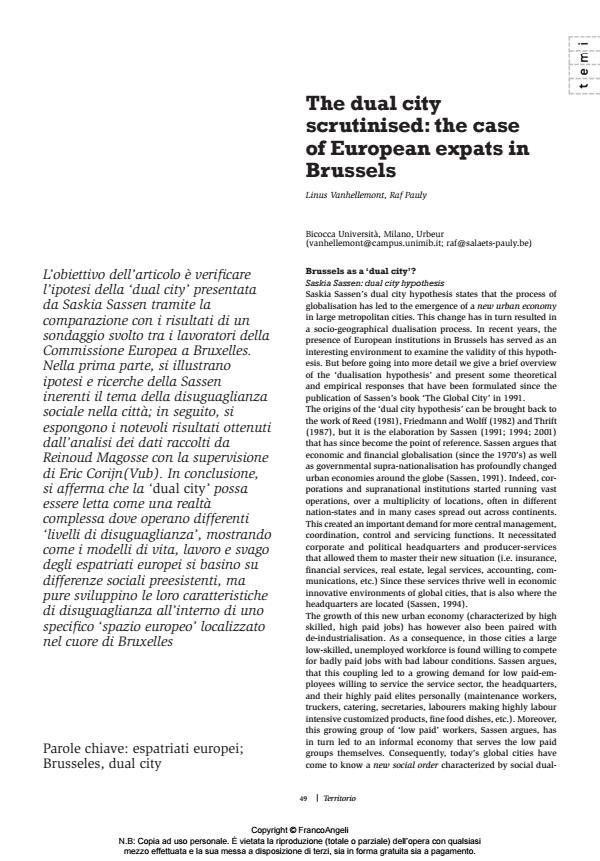The dual city scrutinised: the case of European expats in Brussels
Titolo Rivista TERRITORIO
Autori/Curatori Linus Vanhellemont, Raf Pauly
Anno di pubblicazione 2015 Fascicolo 2015/73
Lingua Inglese Numero pagine 9 P. 49-57 Dimensione file 386 KB
DOI 10.3280/TR2015-073007
Il DOI è il codice a barre della proprietà intellettuale: per saperne di più
clicca qui
Qui sotto puoi vedere in anteprima la prima pagina di questo articolo.
Se questo articolo ti interessa, lo puoi acquistare (e scaricare in formato pdf) seguendo le facili indicazioni per acquistare il download credit. Acquista Download Credits per scaricare questo Articolo in formato PDF

FrancoAngeli è membro della Publishers International Linking Association, Inc (PILA)associazione indipendente e non profit per facilitare (attraverso i servizi tecnologici implementati da CrossRef.org) l’accesso degli studiosi ai contenuti digitali nelle pubblicazioni professionali e scientifiche
L’obiettivo dell’articolo è verificare l’ipotesi della ‘dual city’ presentata da Saskia Sassen tramite la comparazione con i risultati di un sondaggio svolto tra i lavoratori della Commissione Europea a Bruxelles. Nella prima parte, si illustrano ipotesi e ricerche della Sassen inerenti il tema della disuguaglianza sociale nella città; in seguito, si espongono i notevoli risultati ottenuti dall’analisi dei dati raccolti da Reinoud Magosse con la supervisione di Eric Corijn(Vub). In conclusione, si afferma che la ‘dual city’ possa essere letta come una realtà complessa dove operano differenti ‘livelli di disuguaglianza’, mostrando come i modelli di vita, lavoro e svago degli espatriati europei si basino su differenze sociali preesistenti, ma pure sviluppino le loro caratteristiche di disuguaglianza all’interno di uno specifico ‘spazio europeo’ localizzato nel cuore di Bruxelles
Parole chiave:Espatriati europei; Brusseles, dual city
Linus Vanhellemont, Raf Pauly, The dual city scrutinised: the case of European expats in Brussels in "TERRITORIO" 73/2015, pp 49-57, DOI: 10.3280/TR2015-073007